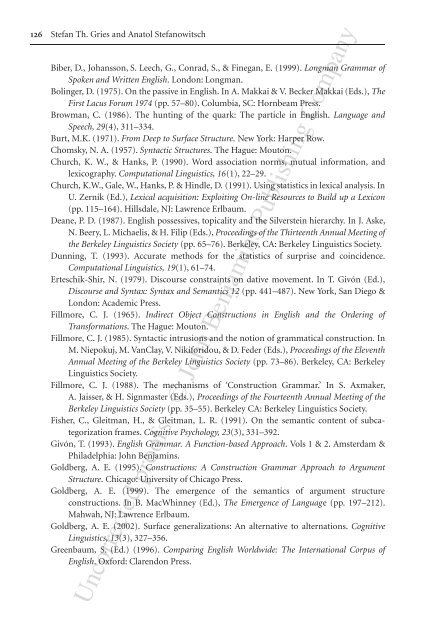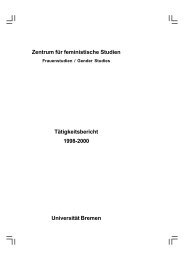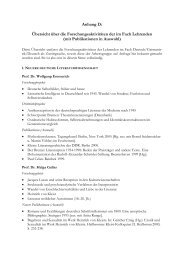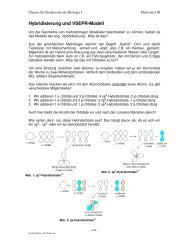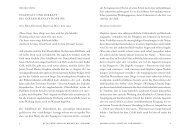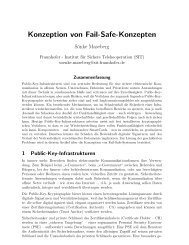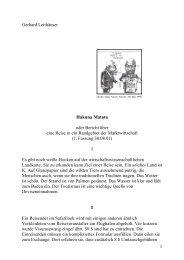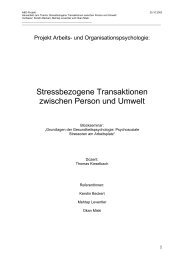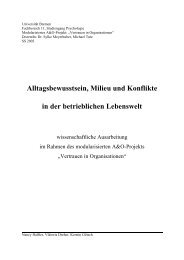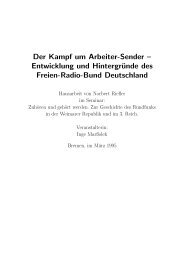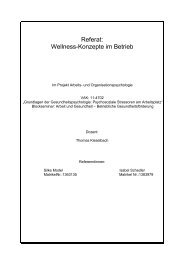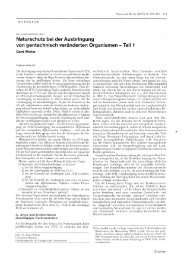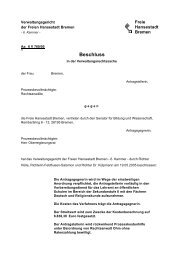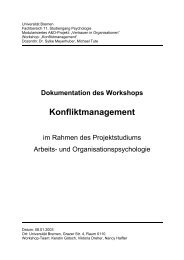Extending collostructional analysis - www-user
Extending collostructional analysis - www-user
Extending collostructional analysis - www-user
You also want an ePaper? Increase the reach of your titles
YUMPU automatically turns print PDFs into web optimized ePapers that Google loves.
126 Stefan Th. Gries and Anatol Stefanowitsch<br />
Biber, D., Johansson, S. Leech, G., Conrad, S., & Finegan, E. (1999). Longman Grammar of<br />
Spoken and Written English. London: Longman.<br />
Bolinger, D. (1975). On the passive in English. In A. Makkai & V. Becker Makkai (Eds.), The<br />
First Lacus Forum 1974 (pp. 57–80). Columbia, SC: Hornbeam Press.<br />
Browman, C. (1986). The hunting of the quark: The particle in English. Language and<br />
Speech, 29(4), 311–334.<br />
Burt, M.K. (1971). From Deep to Surface Structure. NewYork:HarperRow.<br />
Chomsky, N. A. (1957). Syntactic Structures. The Hague: Mouton.<br />
Church, K. W., & Hanks, P. (1990). Word association norms, mutual information, and<br />
lexicography. Computational Linguistics, 16(1), 22–29.<br />
Church, K.W., Gale, W., Hanks, P. & Hindle, D. (1991). Using statistics in lexical <strong>analysis</strong>. In<br />
U. Zernik (Ed.), Lexical acquisition: Exploiting On-line Resources to Build up a Lexicon<br />
(pp. 115–164). Hillsdale, NJ: Lawrence Erlbaum.<br />
Deane, P. D. (1987). English possessives, topicality and the Silverstein hierarchy. In J. Aske,<br />
N. Beery, L. Michaelis, & H. Filip (Eds.), Proceedings of the Thirteenth Annual Meeting of<br />
the Berkeley Linguistics Society (pp. 65–76). Berkeley, CA: Berkeley Linguistics Society.<br />
Dunning, T. (1993). Accurate methods for the statistics of surprise and coincidence.<br />
Computational Linguistics, 19(1), 61–74.<br />
Erteschik-Shir, N. (1979). Discourse constraints on dative movement. In T. Givón (Ed.),<br />
Discourse and Syntax: Syntax and Semantics 12 (pp. 441–487). New York, San Diego &<br />
London: Academic Press.<br />
Fillmore, C. J. (1965). Indirect Object Constructions in English and the Ordering of<br />
Transformations. The Hague: Mouton.<br />
Fillmore, C. J. (1985). Syntactic intrusions and the notion of grammatical construction. In<br />
M.Niepokuj,M.VanClay,V.Nikiforidou,&D.Feder(Eds.),Proceedings of the Eleventh<br />
Annual Meeting of the Berkeley Linguistics Society (pp. 73–86). Berkeley, CA: Berkeley<br />
Linguistics Society.<br />
Fillmore, C. J. (1988). The mechanisms of ‘Construction Grammar.’ In S. Axmaker,<br />
A. Jaisser, & H. Signmaster (Eds.), Proceedings of the Fourteenth Annual Meeting of the<br />
Berkeley Linguistics Society (pp. 35–55). Berkeley CA: Berkeley Linguistics Society.<br />
Fisher, C., Gleitman, H., & Gleitman, L. R. (1991). On the semantic content of subcategorization<br />
frames. Cognitive Psychology, 23(3), 331–392.<br />
Givón, T. (1993). English Grammar. A Function-based Approach. Vols1&2.Amsterdam&<br />
Philadelphia: John Benjamins.<br />
Goldberg, A. E. (1995). Constructions: A Construction Grammar Approach to Argument<br />
Structure. Chicago: University of Chicago Press.<br />
Goldberg, A. E. (1999). The emergence of the semantics of argument structure<br />
constructions. In B. MacWhinney (Ed.), The Emergence of Language (pp. 197–212).<br />
Mahwah, NJ: Lawrence Erlbaum.<br />
Goldberg, A. E. (2002). Surface generalizations: An alternative to alternations. Cognitive<br />
Linguistics, 13(3), 327–356.<br />
Greenbaum, S. (Ed.) (1996). Comparing English Worldwide: The International Corpus of<br />
English. Oxford: Clarendon Press.<br />
Uncorrected proofs - © John Benjamins Publishing Company


